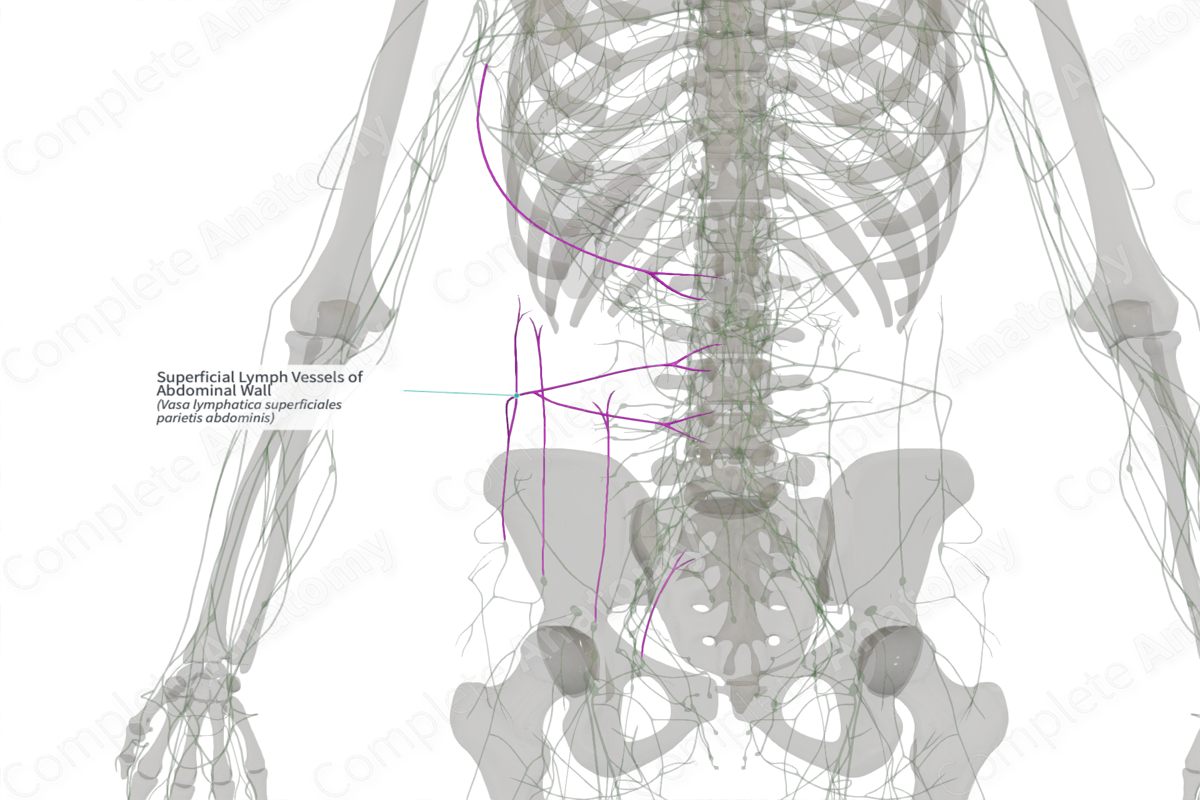
Superficial Lymph Vessels of Abdominal Wall (Left)
Vasa lymphatica superficiales parietis abdominis
Read moreDescription
The lymphatic vessels form a drainage system parallel to the blood vessels. It is responsible for draining interstitial (or extracellular) fluid that has escaped from the cardiovascular system, as well as the removal of cellular debris, and returning it to the venous system as lymph.
Lymphatic drainage of the abdominal wall can be distinguished into superficial (or subcutaneous) and deep lymph vessels.
Superficial lymph vessels drain the skin and the subcutaneous tissues of the abdominal wall, returning lymph to the superficial inguinal lymph nodes below the umbilicus, and to the pectoral and axillary lymph nodes above the umbilicus (Földi et al., 2012).
Related parts of the anatomy
References
Földi, M., Földi, E., Strößenreuther, R. and Kubik, S. (2012) Földi's Textbook of Lymphology: for Physicians and Lymphedema Therapists. Elsevier Health Sciences.
Learn more about this topic from other Elsevier products
Lymph Vessel

The lymph vessels are blind-ending capillaries which have gaps in their endothelial walls enabling protein molecules to move through easily.




